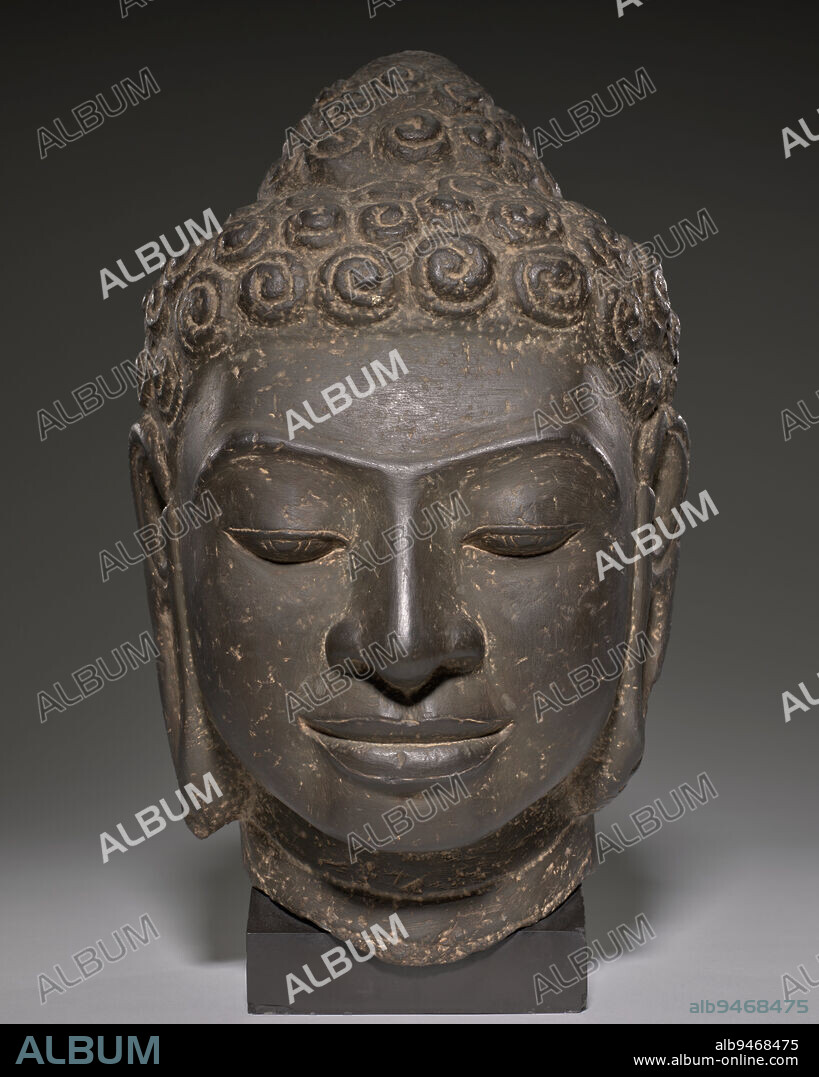alb9468475
Buddha Head, 8th century, 10 1/2 x 8 in. (26.67 x 20.32 cm), Limestone, Cambodia or Thailand, Mon-Dvaravati Style, This Buddha demonstrates a critical innovation of Southeast Asian sculpture: the early translation of established Indian prototypes into distinctly local expressions. The sculptor fully captures the calm bliss of the enlightened being while subtly incorporating the facial features of the indigenous population. Similarly, artists of the Mon-Dvaravati period exaggerated the Buddhas snail-shell curls, an attribute codified in Indian aesthetic treatises; the tight whorls would have had special significance to a culture where shells were valued forms of ornamentation.

|
Ajouter à une autre Lightbox |
|
Ajouter à une autre Lightbox |



Avez-vous déjà un compte? S'identifier
Vous n'avez pas de compte ? S'inscrire
Acheter cette image

Légende:
Voir la traduction automatique
Buddha Head, 8th century, 10 1/2 x 8 in. (26.67 x 20.32 cm), Limestone, Cambodia or Thailand, Mon-Dvaravati Style, This Buddha demonstrates a critical innovation of Southeast Asian sculpture: the early translation of established Indian prototypes into distinctly local expressions. The sculptor fully captures the calm bliss of the enlightened being while subtly incorporating the facial features of the indigenous population. Similarly, artists of the Mon-Dvaravati period exaggerated the Buddhas snail-shell curls, an attribute codified in Indian aesthetic treatises; the tight whorls would have had special significance to a culture where shells were valued forms of ornamentation.
Crédit:
Album / quintlox
Autorisations:
Modèle: Non - Propriété: Non
Questions sur les droits?
Questions sur les droits?
Taille de l'image:
5121 x 6401 px | 93.8 MB
Taille d'impression:
43.4 x 54.2 cm | 17.1 x 21.3 in (300 dpi)
Mots clés:
 Pinterest
Pinterest Twitter
Twitter Facebook
Facebook Copier le lien
Copier le lien Email
Email
